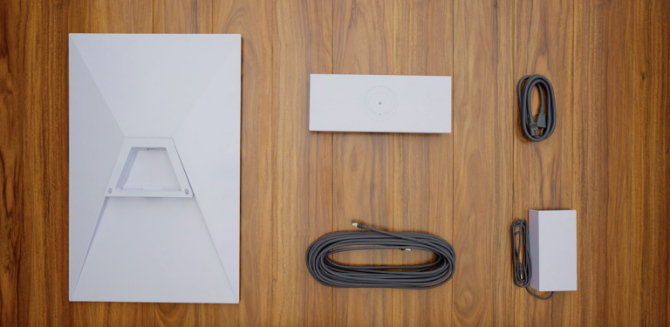The new dish, which costs $599, is said to function better.
If you are considering signing up for Starlink service in the United States, you will need to decide whether to purchase the new Gen 3 dish or the standard dish. SpaceX has finally opened up sales of the new dish to the public; an invitation is not needed. At this time, the dish is only available with more expensive service tiers, and the company has not stated whether the new dish will result in faster speeds.
Although this dish was only accessible through invitations when SpaceX first quietly released it in November, it is now available to anyone setting up Starlink service. The Gen 3 hardware is not compatible with the base service tier, so it is unclear if this is a temporary restriction or if SpaceX is just working with limited stock.
Gen 3 dishes cost $599, which is the same as the second-generation “standard actuated” dish. Unlike that model, the new dish does not require motors to orient it; all you have to do is prop it up with the kickstand pointing skyward, and it will pick up a signal. It is also more durable, with an IP67 water and dust-resistance rating, as opposed to IP54 on the previous model. Despite being stationary, this dish requires between 75 and 100W of power, whereas the previous one could only pull a maximum of 75W.

This could be a problem because many Starlink subscribers power their dishes in remote locations with batteries or generators; these are also the customers that SpaceX is initially targeting with the dish. In order to get the new hardware, you will need to subscribe to the “Roam” tier, which allows you to use the dish in multiple locations. This service costs $150 per month instead of $90 or $120 (depending on region) for the regular residential service. Alternatively, you can get the dish with the $250 monthly Business tier. Additionally, you will need to be in the US to receive the new dish, according to PCMag.
The approximate service for all of these service options is the same; on a good day, you can expect to receive about 100Mbps down from the standard service. A more expensive high-performance antenna can increase speed to 500Mbps, but that comes with a $2,500 dish; in light of this, the $599 Gen 3 hardware seems like a great deal. Additionally, the Gen 3 hardware includes an updated router that supports Wi-Fi 6.
Although the FCC has approved SpaceX to launch 7,500 additional Gen 2 Starlink satellites, most of those will have to wait until the Starship super-heavy lift rocket is completed. Until then, we would not anticipate that the new dish will significantly impact Starlink speeds. SpaceX has begun deploying its new Gen 2 Starlink satellites in limited quantities.

